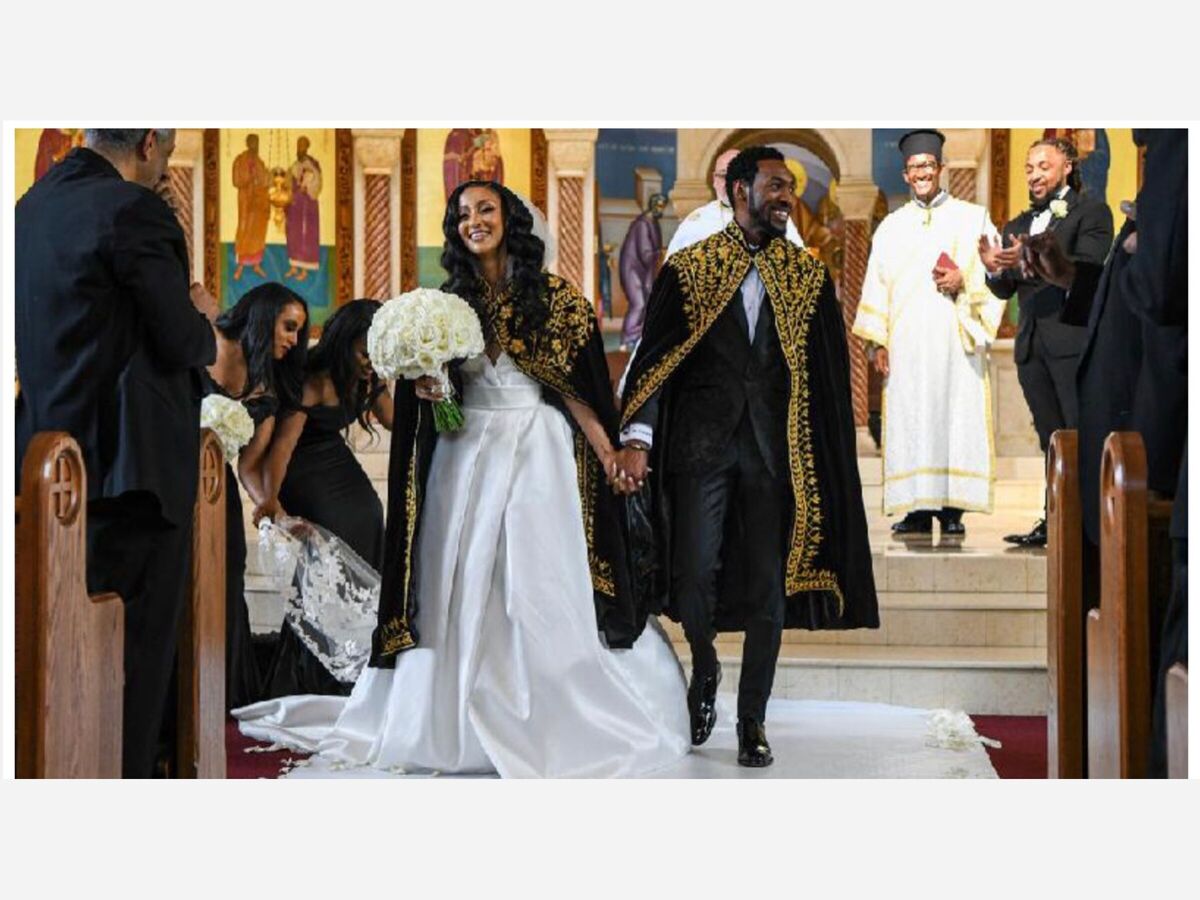Image


Edna Tafari Makonnen and Jamal Akil Robinson met for coffee at Bon Bon’s Coffee Company of Fort Wayne in February 2015.
Edna is an Ethiopian princess, a great-granddaughter of Haile Selassie, Ethiopia’s last emperor, whose lineage is traced to the biblical King Solomon and Queen of Sheba.
According to the New Year Times article by Tammy La Gorce, the two first connected on Instagram, after he messaged her through the app. See her Instagram account here:
https://www.instagram.com/p/CdLl18ntg_O/?igshid=MDJmNzVkMjY=
The New York Times article also reveals details about the high school careers of the newlyweds, both graduates of Northrop High School in Fort Wayne. “A senior when Ms. Makonnen was a freshman, Mr. Robinson, now 34, had been a star soccer player. “Jamal was this popular, outgoing guy who caught everyone’s eye,” she said. Though his teenage swagger was long gone when they sat down for coffee, Ms. Makonnen, now 31, was still mindful of her 14-year-old self.
“I was the studious type,” she said. “He didn’t even remember me.”
As a child, Ms. Makonnen embraced her royal history as soon as she was old enough to grasp it. “My parents instilled in me who I am, and I was just so respectful of it,” she said.”
Edna Makonnen spoke Amharic, the predominant language in Ethiopia, before English.
“In grade school, she let others know she could wear a tiara with authority. “My parents would come to pick me up, and my teachers would say, ‘Edna said she’s a princess.’” Ms. Makonnen said. “And they would say, ‘She is!’”
After graduating from Indiana University with a bachelor’s degree in public health in 2014, she returned home to her parents, Prince Tafari Makonnen and Aster Abitow; her maternal grandmother, Aregash Mengesha; and two younger brothers.
According to the NYT, “Prince Tafari and Mrs. Abitow, whose father served as special adviser to a prime minister of Ethiopia under Selassie, came to Indiana in the late 1980s. They met in 1987 in Zimbabwe, where each had relocated after Selassie was overthrown as emperor and imprisoned in 1974. “Out of all the places in the U.S., they came to Fort Wayne,” Ms. Makonnen said, because her father’s great-uncle had settled there in the early 1980s.”
Read the full NYT article here:
“Fitting Into His Schedule, Then Into Her Royal Family”
https://www.nytimes.com/2022/06/10/style/edna-makonnen-jamal-robinson-w…
Photos from Instagram and the NYT:
The bride and her mother, Aster Abitow, before the wedding.
Credit...Kenny Holston for The New York Times
Ms. Makonnen and Mr. Robinson, who had attended the same Indiana high school, started dating in 2015 after he reached out on Instagram. She works for the National Security Council in Washington; he founded a line of sunglasses.
Credit...Kenny Holston for The New York Times
The Rev. Andrew Jarmus, a pastor at St. Nicholas Cathedral in Fort Wayne, Ind., led the ceremony in Amharic and English.
Credit... Kenny Holston for The New York Times
The reception was held at the Mayflower Hotel in Washington.
Credit... Kenny Holston for The New York Times
On April 30, after a yearlong Ethiopian mourning period following the death of a relative and postponements caused by the pandemic, the two married at SS. Peter and Paul Antiochian Orthodox Christian Church in Potomac, Md.
The Rev. Andrew Jarmus, a pastor at St. Nicholas Cathedral in Fort Wayne, flew in to officiate at the Orthodox Christian ceremony, led in Amharic and English.
Credit... Kenny Holston for The New York Times
Ms. Makonnen, in a white off-the-shoulder wedding gown with a cathedral-style veil, walked down the aisle on the arm of Prince Tafari to a string quartet; Mr. Robinson, in a black tuxedo, awaited her. At the altar, Father Jarmus placed gold crowns on both the bride and groom, who were later draped in cape-like Ethiopian wedding garments called kabas as part of the ceremony.
Credit... Kenny Holston for The New York Times